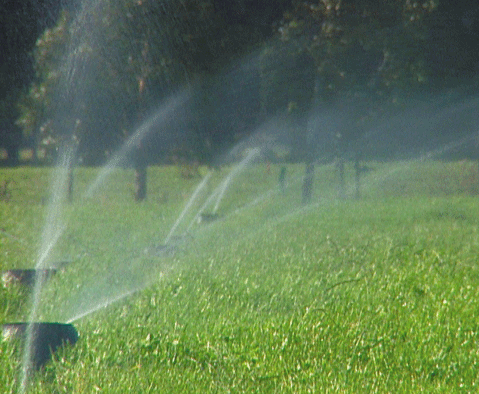An irrigation system can be a true benefit to a homeowner, but it does require maintenance and upkeep periodically. With an irrigation system, you will not have to lug a hose and sprinkler across the yard or remember to manually turn the water on and off at specific periods of time.
An irrigation system takes the hassle and stress out of watering your yard, but during the winter months, the pipes that run underground in your yard may freeze when the temperature drop. When a pipe freezes, the water that is left inside the pipe will expand. This water essentially can exert outward pressure on the pipes and force the pipes to burst. When this happens, the pipe will need to be repaired, and you may experience the expense of water waste until the damage is repaired. The good news is that there is a simple and easy way to prevent this from happening. You can take a few steps before the start of the cold weather season to prepare your irrigation system for freezing weather, and your efforts can help you to keep your system in great shape.
Drain the Water From the Pipes
The first step to take when you are preparing your irrigation system for the cold weather system is to turn off the main valve to the system. This typically requires you to simply turn a knob to the off position. Then, you can take steps to drain the water from the pipes. This process may vary based on the type of irrigation system that you have. Generally, you will need a solenoid drain valve installed in order to accomplish this task. If you do not have a drain valve installed, you may need to install one or have a professional plumber install one for you. This will enable you to easily remove the water from the pipes.

Adjust the Automatic Settings
After you have turned off the water supply to the sprinkler system and you have drained the water from the system, you should adjust the automatic settings to the sprinkler system. For most systems, this means that you will turn the automatic setting to the “rain” setting. However, each system is different. In some cases, you may simply shut down the automatic settings for the winter season. This will prevent the system from trying to turn on when the water supply is not available.
When You Turn the System Back On
Turning the system back on is fairly easy to do, but you should ensure that the last freeze of the season has occurred before you take this step. It generally only takes a few hours of a moderate freeze to free the pipes below ground, and this is because most irrigation systems have pipes that are only a few inches below the surface of the ground. If you turn your system back on too soon and another freeze is pending, you may need to repeat these steps in order to prevent your pipes from bursting and causing damage.
In even warm weather climates, there may be a few deep freezes per year and many days with light freezes. Because of this, almost everyone who has an irrigation system installed on their property will benefit from winterizing their system. It is fairly easy for most people to winterize their irrigation system on their own within a short period of time. However, if you need assistance with this process or if you need help installing a drain valve or another similar type of feature, you can request assistance from a plumber or a landscaping company.























